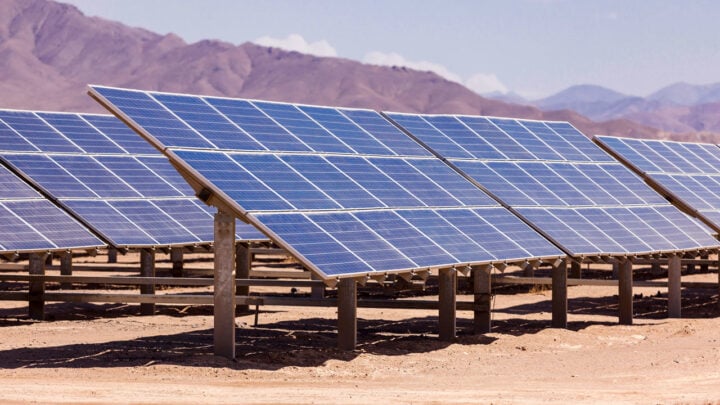Solar Panels | File photo
Jeff Logan, associate director of energy, policy and analysis at the US Renewable and Sustainable Energy Institute (RASEI), says research shows that wind and solar energy are expected to become the largest source of electricity generation by 2024.
He said renewable energy is growing quickly across the world compared to coal, hydropower, and natural gas.
Speaking during a briefing of the US Foreign Press Centers’ virtual reporting tour on the climate crisis, Logan noted that the US has reduced its use of petroleum products to generate electricity in order to tackle the dangers of climate change.
“And because those costs for wind and solar are declining so rapidly, we see exponential growth in renewable energy around the world. This is a look at globally installed renewable energy, and the source of this is from BP’s Statistical Review of World Energy, and you can see that especially wind and solar have grown very, very rapidly. Biomass and other forms of renewables, such as hydro and geothermal, have not grown anywhere near as fast as the wind and solar,” Logan said.
Advertisement
“This recent outlook from the International Energy Agency in Paris shows that at least from a capacity perspective, wind and solar are expected to become the largest source of generation in the world by roughly 2024. So that’s pretty amazing in itself, that renewables are growing that quickly compared to coal, hydropower and natural gas.
“So as we deploy more and more variable renewables around the world, we see some countries with very high shares of wind and solar. And here – this is a look from the IEA and from the 21st Century Power Partnership, which is one of the initiatives of the Clean Energy Ministerial. And it shows the penetration level of different kinds of variable renewable energy in different jurisdictions around the world.
“And I don’t think we’ve ever seen a bigger change in the generation mix, at least in the United States, ever, because of the fact that we had these simultaneous revolutions in natural gas production and renewables. Nothing else has changed much other than the fact that we don’t use petroleum very much anymore to generate electricity. So those are some of the visible impacts of the trends that we’re talking about so far.”
Advertisement
Logan said solar PV has become very cheap such that more people are now having access to energy for the first time. He added that the sales of electric vehicles will grow in the future.
“Because solar PV has become so cheap, more and more locations now have access to or can now enable their citizens to have electricity for the first time. And sometimes these are installed as microgrids and sometimes they’re just standalone systems for a single home maybe. And recently, global access to – or the amount of people in the world who don’t have access to electricity has fallen below 1 billion people. Now it’s about 940 million people that still don’t have access to electricity, but that’s about 13 per cent of the population. It’s going down, which is a good sign,” Logan noted.







